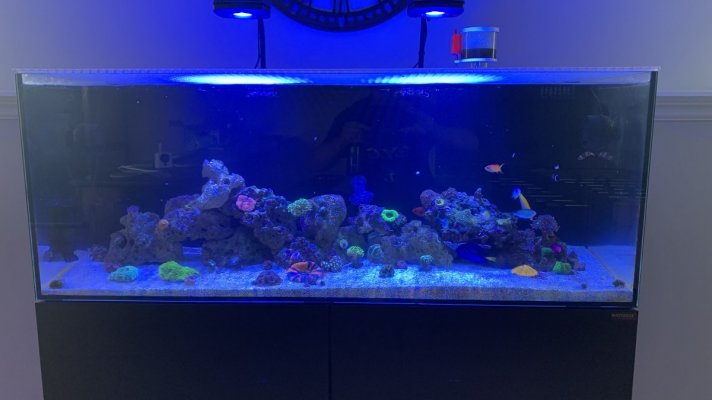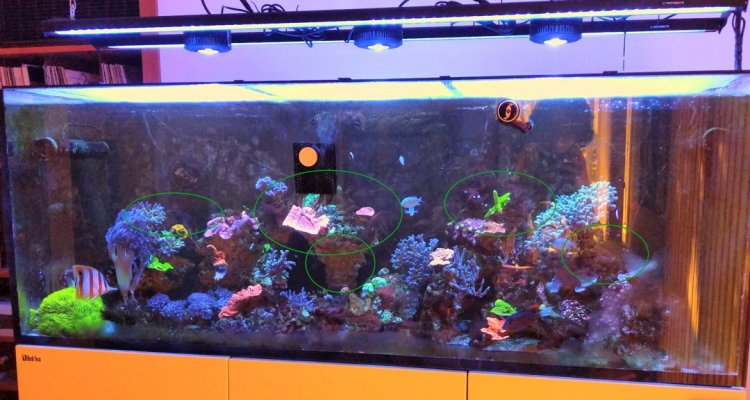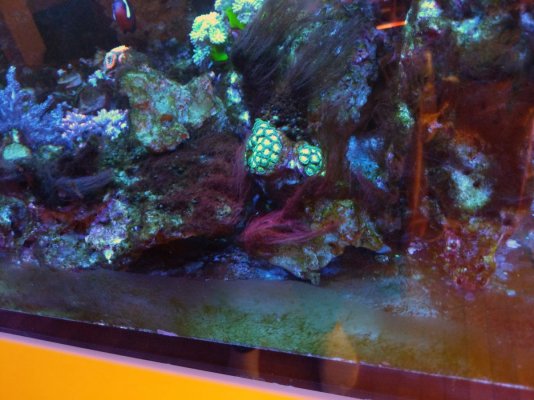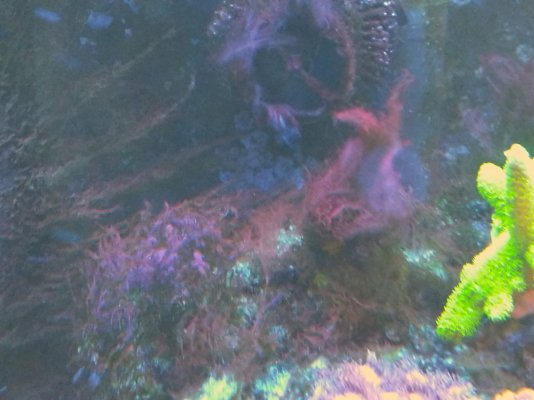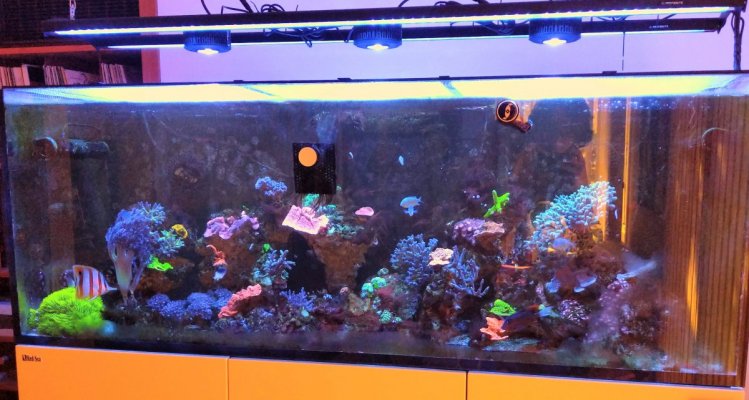I'm finding my corals, where they are, either have too much light or not enough. There are some parts where algae is out-competing certain corals and light isn't helping. Can I see some examples (preferably photos?) of some aquascape and lighting decisions which went hand-in-hand in seeing success, for particular species? Examples which allowed for growth of a given colony for a while, without issue, would be ideal.
I have a combination of 3x kessil A360X and 2x reef brite XHO actinics for a so seeing how people place their corals under lights like these would be helpful, too. It's a Reefer 525 (6'x22"tall x 22" wide, I think)?
I'm thinking of arranging my rocks so that they're all in the lower half of the tank, so that the difference between the brightest and darkest placement spots don't have the nearly 200 par difference they have now.
I have a combination of 3x kessil A360X and 2x reef brite XHO actinics for a so seeing how people place their corals under lights like these would be helpful, too. It's a Reefer 525 (6'x22"tall x 22" wide, I think)?
I'm thinking of arranging my rocks so that they're all in the lower half of the tank, so that the difference between the brightest and darkest placement spots don't have the nearly 200 par difference they have now.
Last edited:





